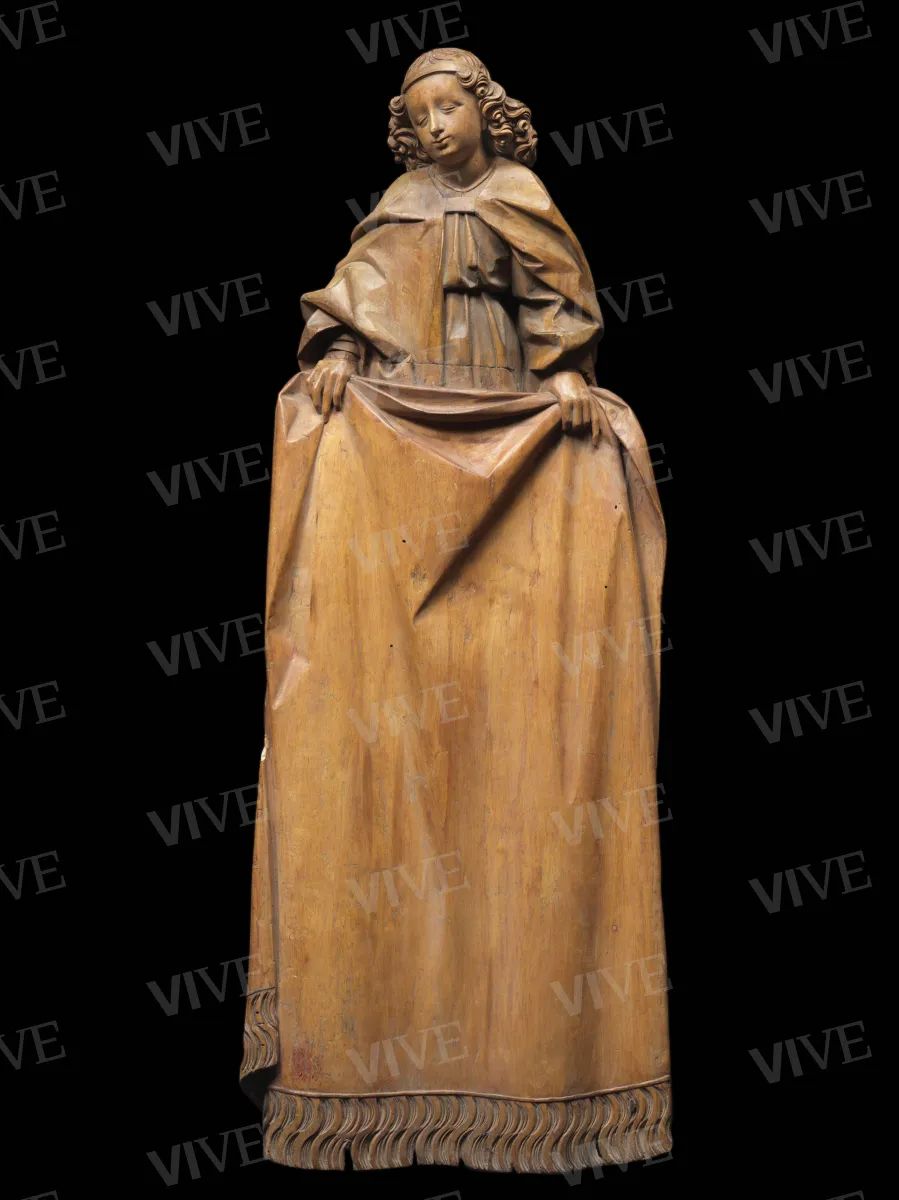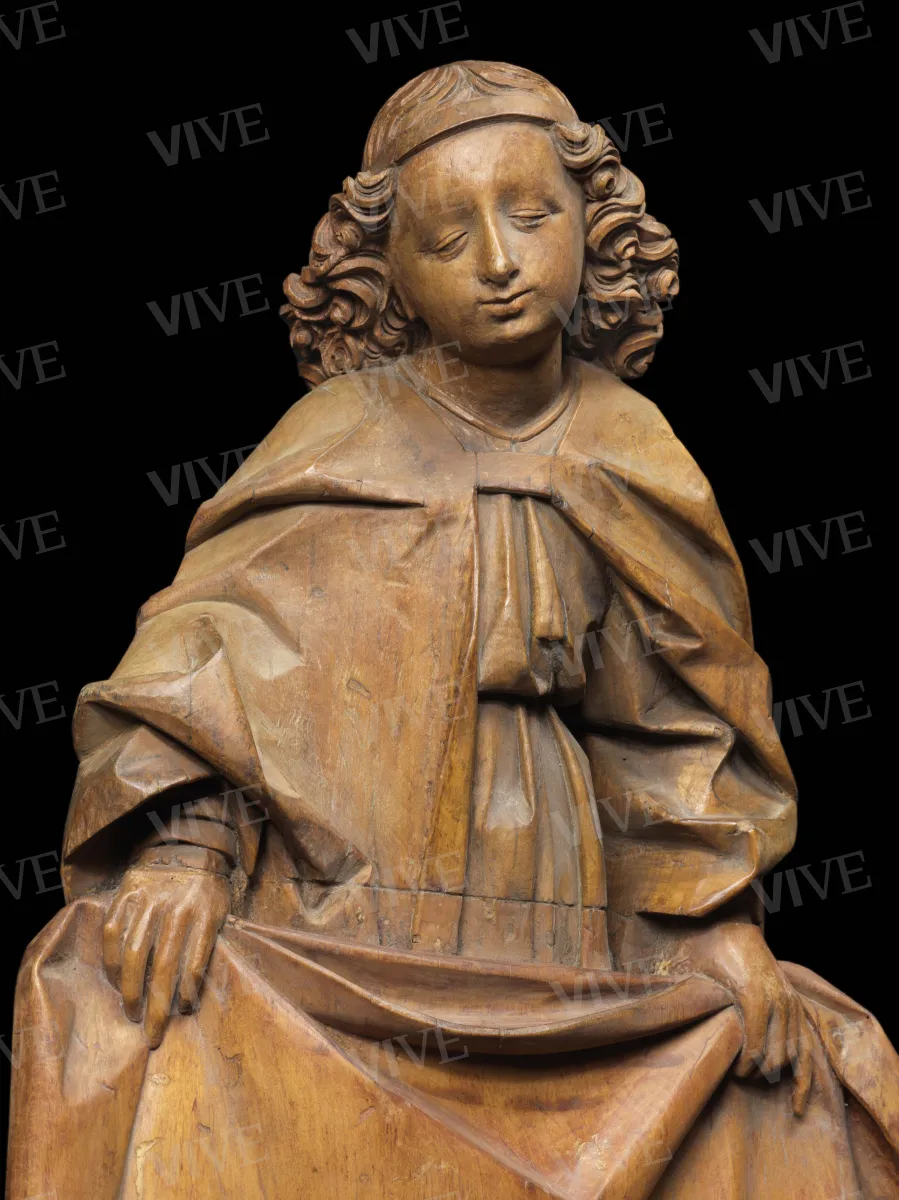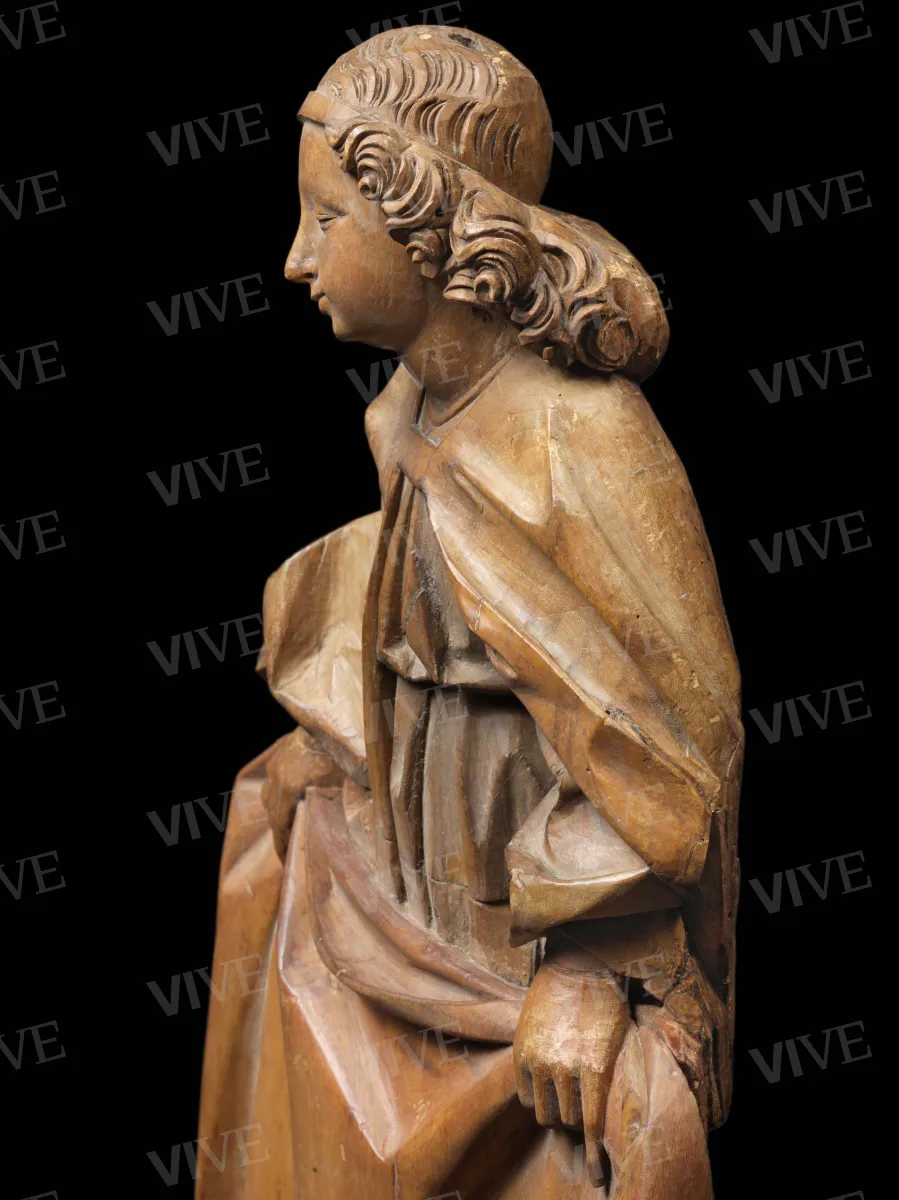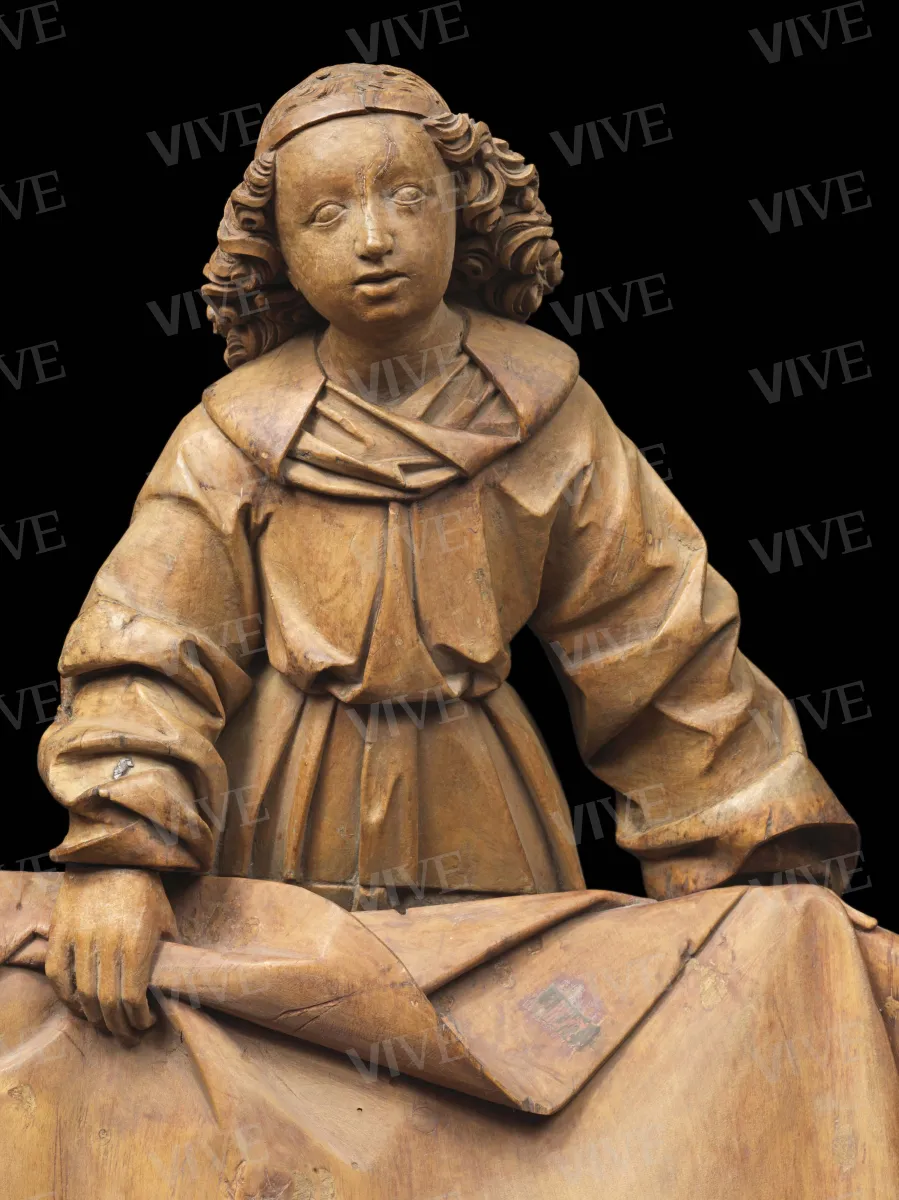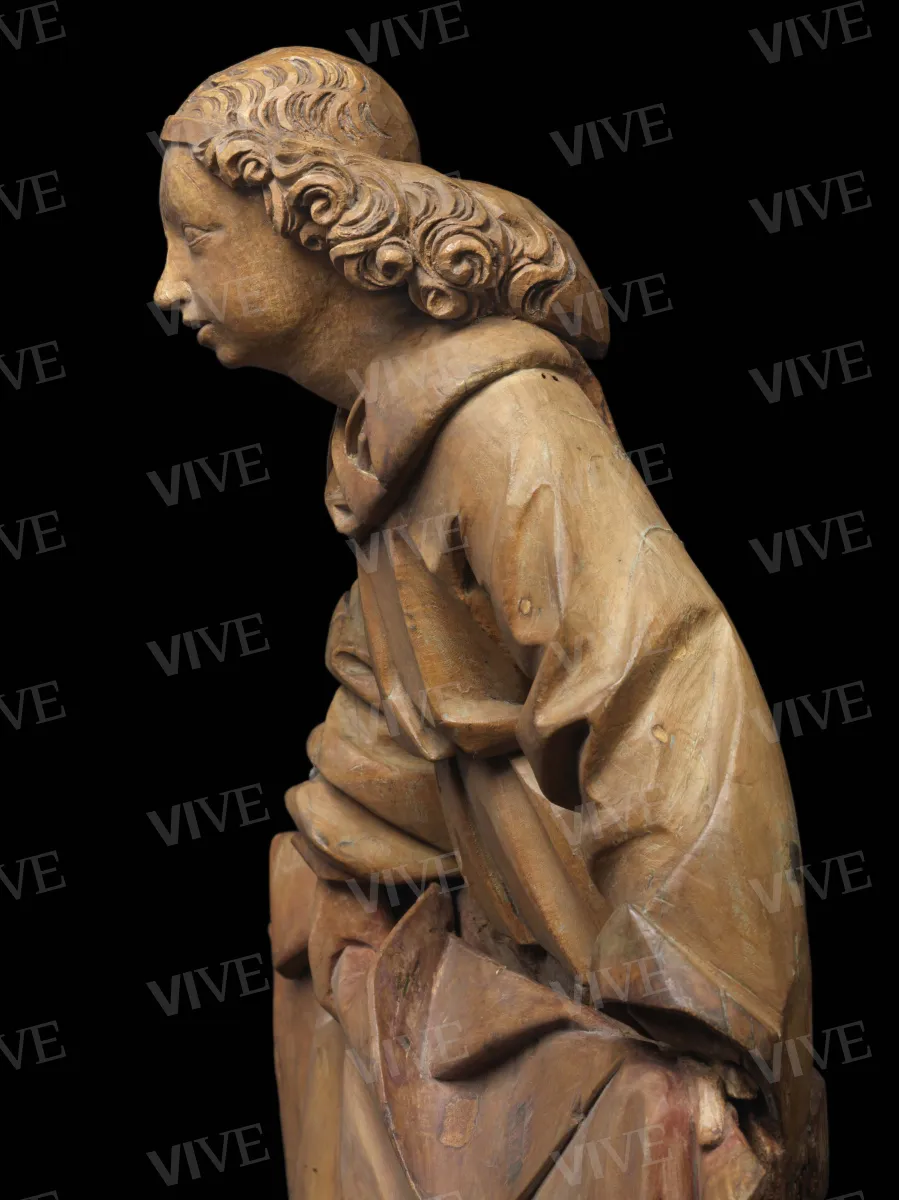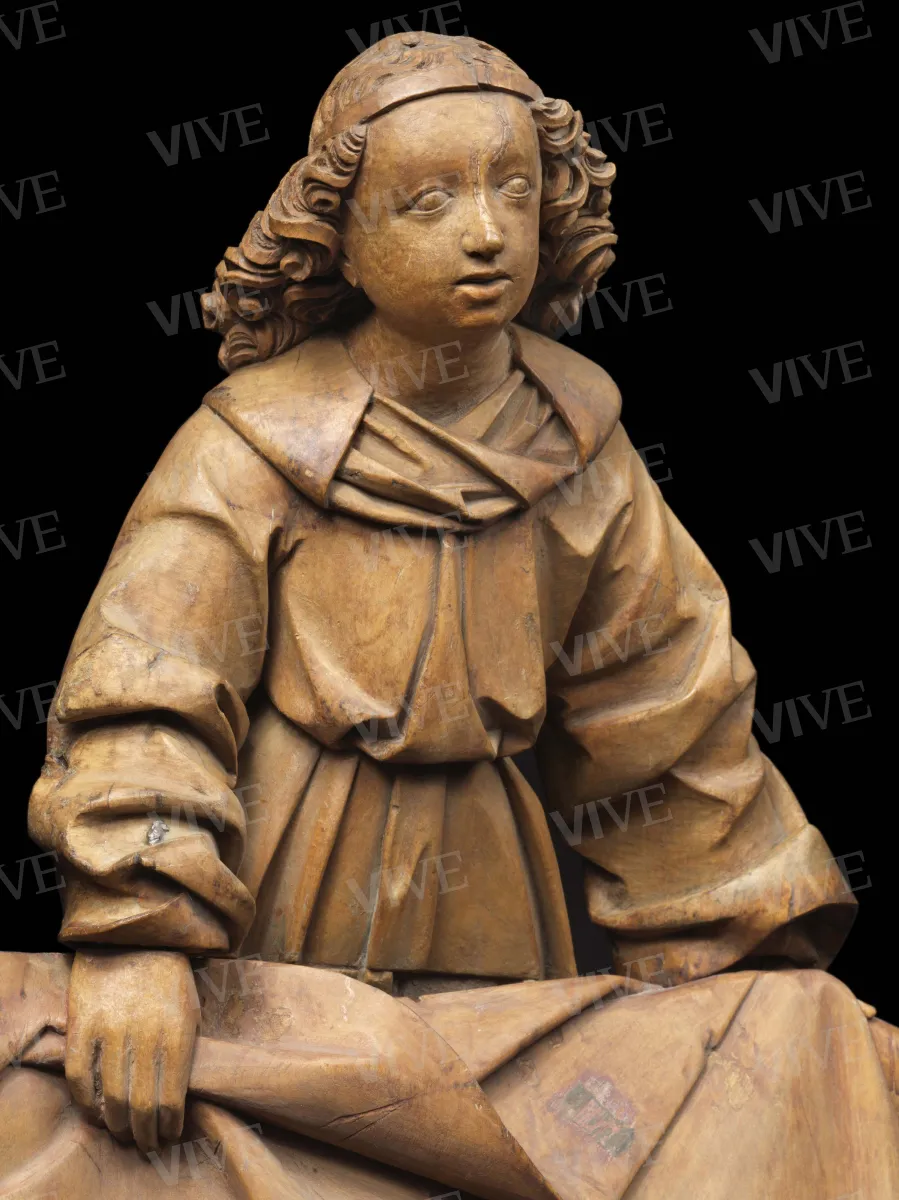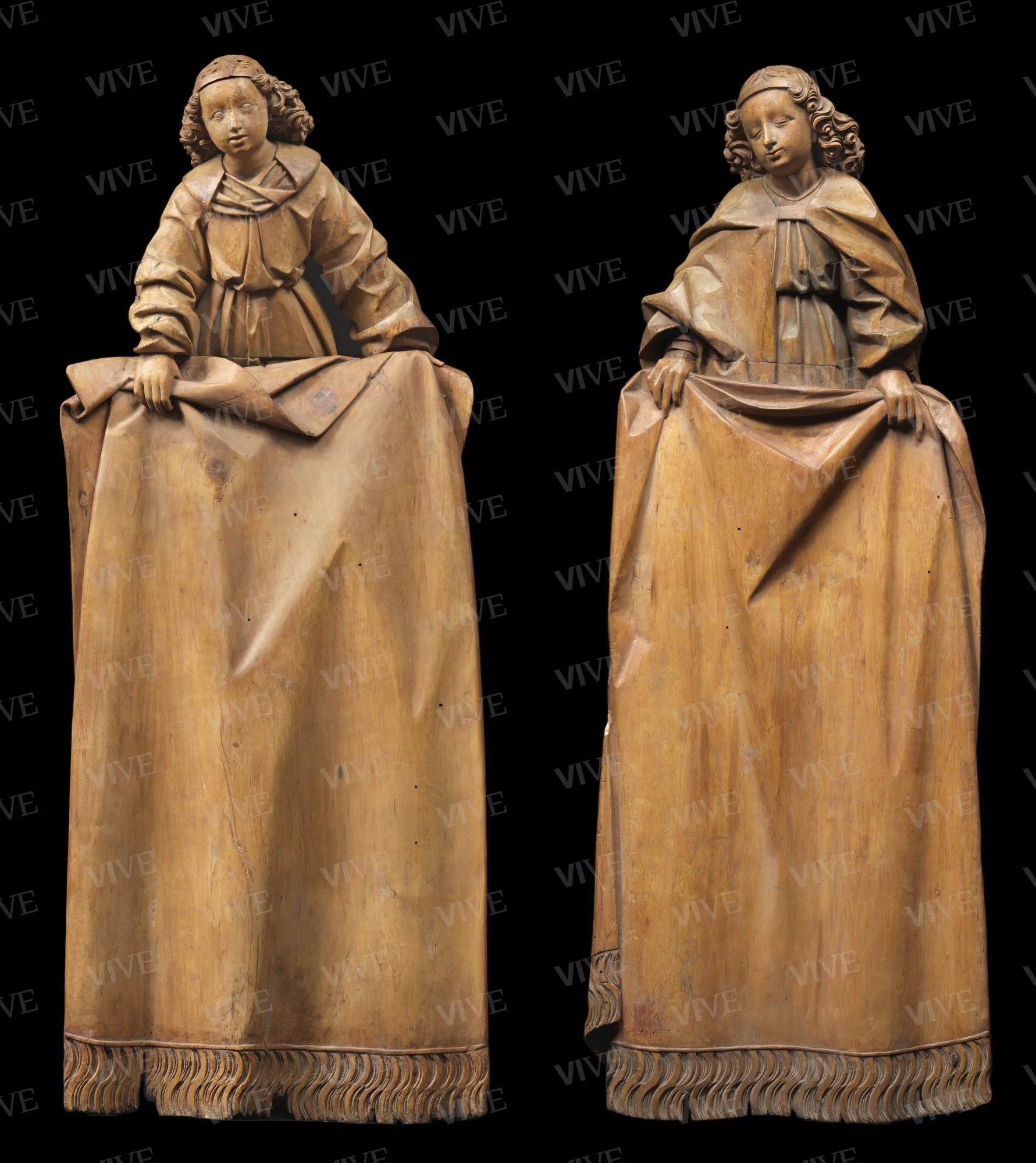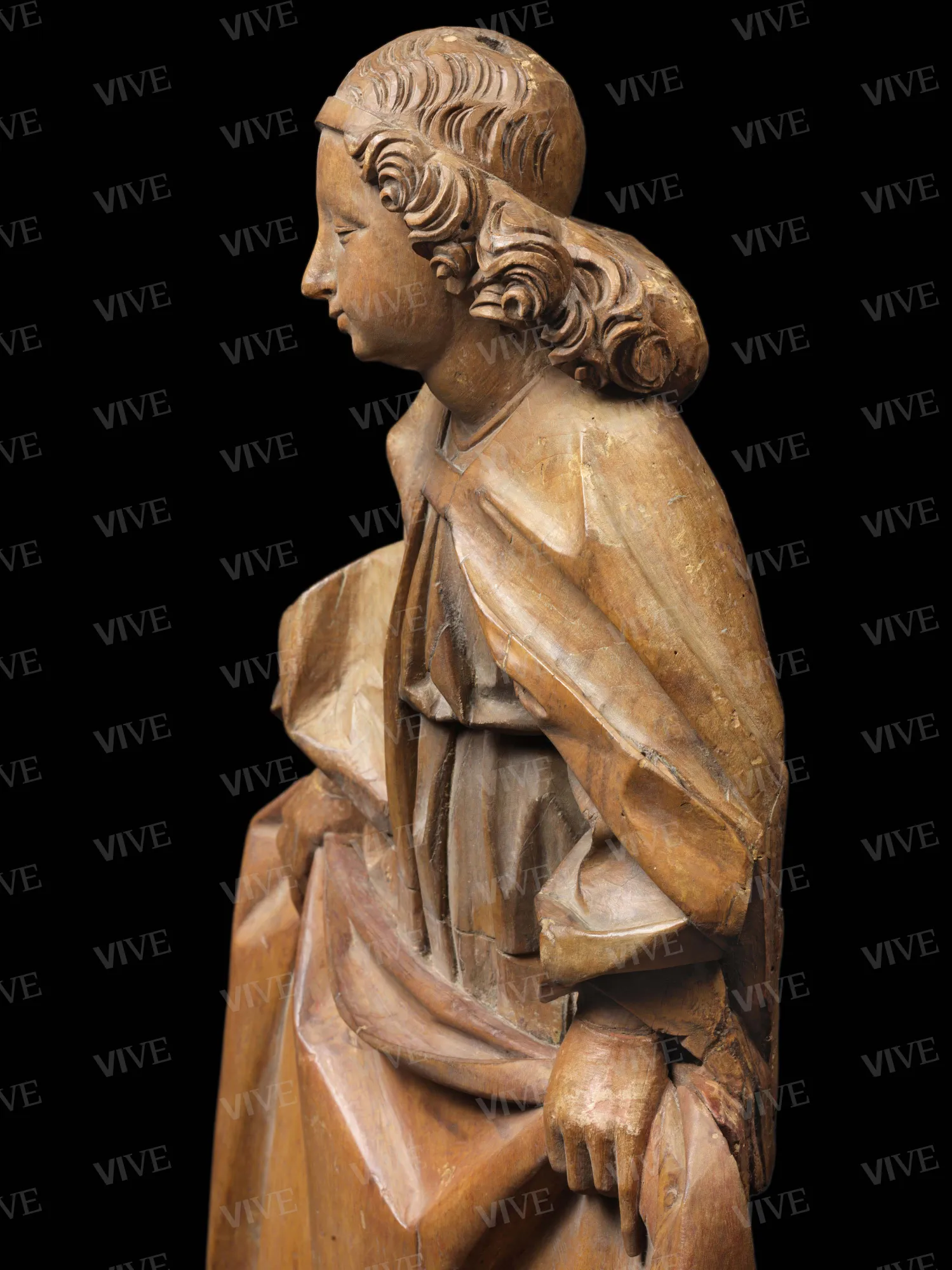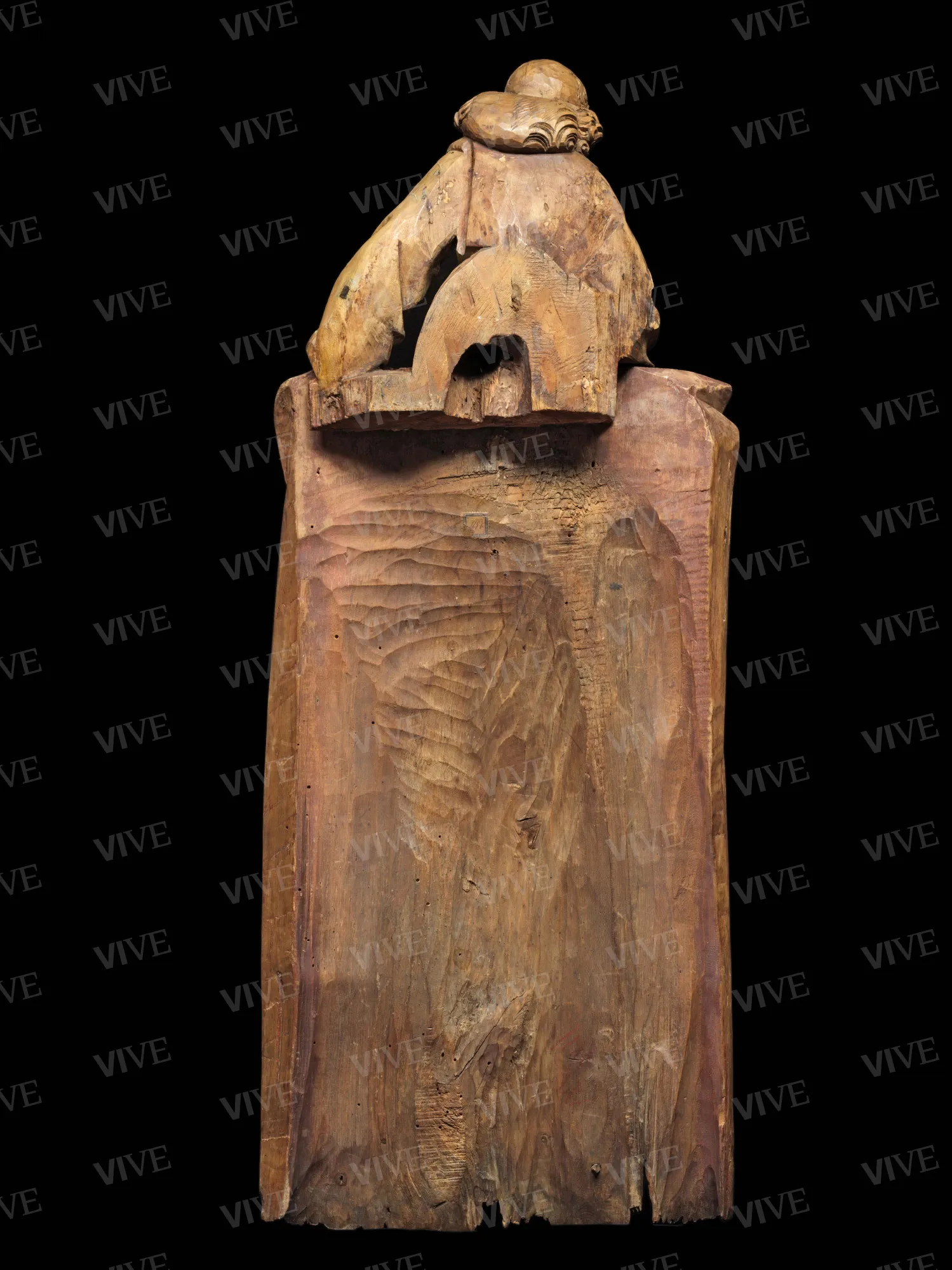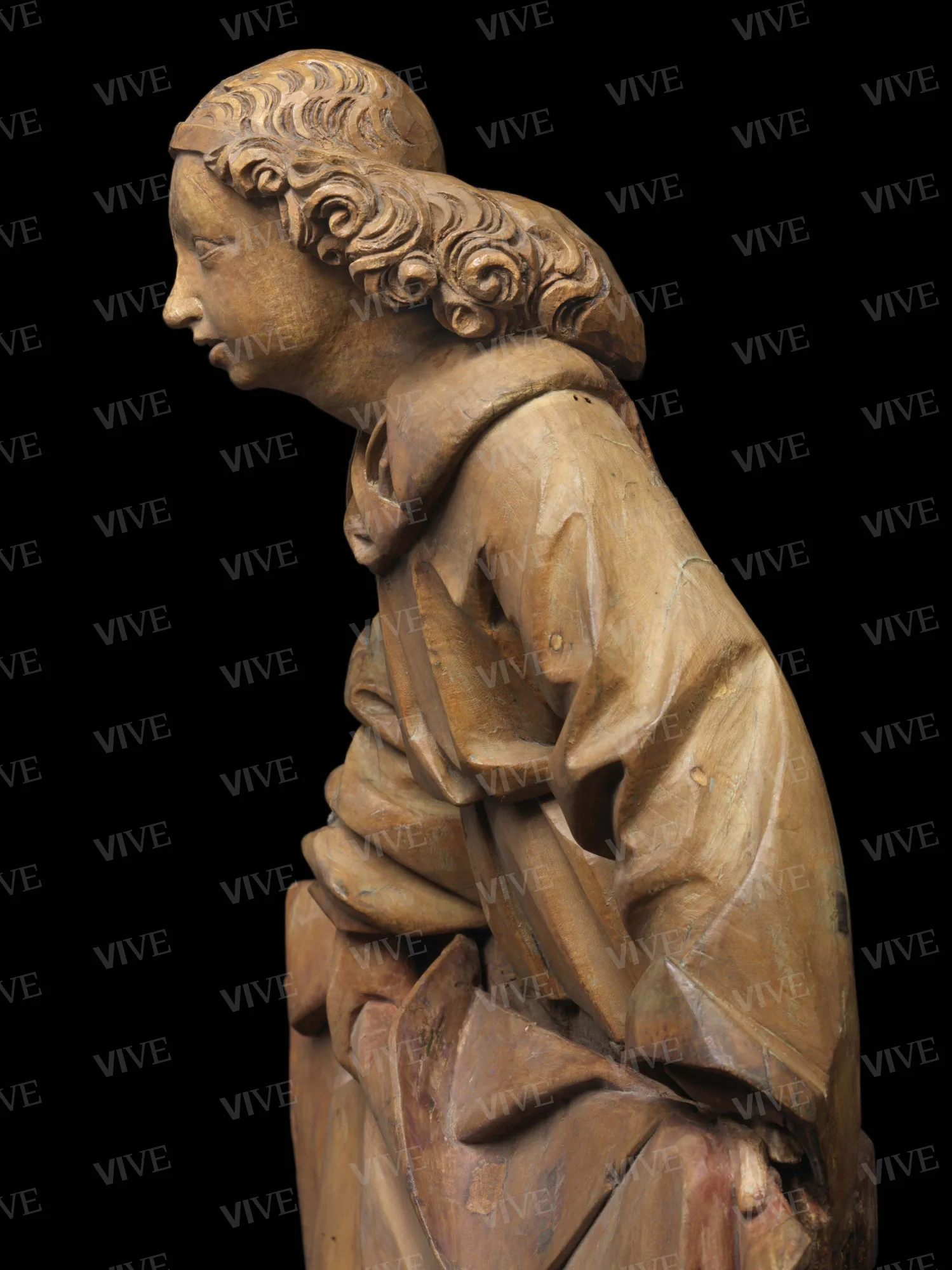Angels Holding Aloft Drapes
German milieu Second half of 15th century
The two drape-holding angels, made of lime wood, are likely the work of an anonymous German artist from the Rhine valley, carved in the second half of the fifteenth century. They originate from the central compartment of a sculptural polyptych, where they were positioned in the background behind the main figures, serving as a scenic backdrop. The polychromy of the pieces, now mostly lost with only a few traces remaining, would have enhanced the overall visual effect.
The two drape-holding angels, made of lime wood, are likely the work of an anonymous German artist from the Rhine valley, carved in the second half of the fifteenth century. They originate from the central compartment of a sculptural polyptych, where they were positioned in the background behind the main figures, serving as a scenic backdrop. The polychromy of the pieces, now mostly lost with only a few traces remaining, would have enhanced the overall visual effect.
Details of work
(b) drape-holding angel: height 87 cm; width 32.5 cm; thickness 10 cm.
Catalog entry
The two wingless angels, presented as pairs, exhibit minor variations, the most notable being the greater height of one (b). Both are portrayed holding a drape stretched before them, slightly ruffled at the top and fringed at the bottom, revealing only their half-busts. The taller angel (b) is adorned in a robe secured at the waist with a cloak fastened by a clasp at the front; his head is tilted with closed lips, and his curls are held in place by a ribbon on his forehead. This hairstyle is also seen in the other angel (a), whose eyes are more open, facing forward, with a half-closed mouth; he wears a similar robe lacking a cloak, featuring a wide neckline with fabric falling abundantly over his chest.
These sculptures became part of the Museo di Palazzo Venezia's collection through the bequest of Henriette Tower Wurts, wife of American diplomat George Wurts, who owned the pieces until 1933. Early museum catalogues attributed these works to the Nuremberg area around 1480, comparing them to four angels crafted by Hans Multscher from the wooden altar in Sterzing’s parish church, now housed in the local Multschermuseum, and other comparable works at the Germanisches Nationalmuseum in Nuremberg (Santangelo 1954).
More recent comparisons have linked these pieces to a group depicting God the Father and Angels (c. 1480) at the Musées Royaux d’Art et d’Histoire in Brussels and the work of Jan Eerstensz Van Schayck, as well as an Angel Playing the Psaltery at the Metropolitan Museum in New York (inv. 31.33.3), attributed to a sculptor from the Rhine Valley between 1460 and 1480 (Fachechi 2011). The two bas-relief, unfinished-back angels likely originated from a carved altar, specifically from the bottom of a central compartment (Santangelo 1954; Fachechi 2011).
Comparison with an altar fragment depicting the Mystic Wedding of Saint Catherine, dated to around 1475, at the Germanisches Nationalmuseum in Nuremberg (inv. Pl.O.138), where three angels hold a precious Burgundian carpet behind the figures, suggests that the Palazzo Venezia examples might have been similarly positioned behind a sacred scene, forming a backdrop with their originally painted drapes. Technical-scientific investigations conducted by IVALSA-CNR of Florence in 2009 identified traces of ancient polychromy on the lime wood and revealed a clear split along the sides affecting both sculptures.
Lorenzo Mascheretti
Entry published on 27 March 2025
State of conservation
Good.
Restorations and analyses
A restoration is documented in 1949;
technical-scientific investigations were carried out in 2009 at IVALSA-CNR, Florence.
Provenance
Rome, Tower Wurts collection, first quarter of the twentieth century;
Rome, Museo Nazionale di Palazzo Venezia, 1933.
References
Santangelo Antonino (a cura di), Museo di Palazzo Venezia. Catalogo delle sculture, Roma 1954, p. 71;
Fachechi Grazia Maria, Museo Nazionale del Palazzo di Venezia. Sculture in legno, in Barberini Maria Giulia (a cura di), Roma. Il Palazzo di Venezia e le sue collezioni di scultura, II, Roma 2011, p. 120, nn. 55-56.


